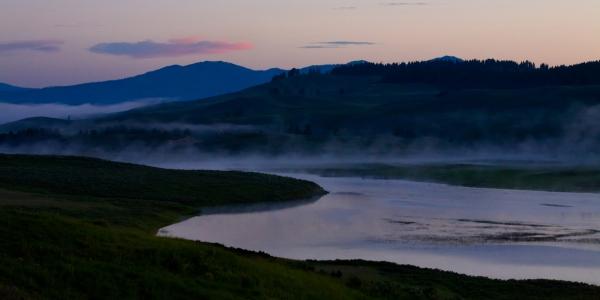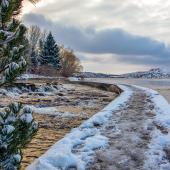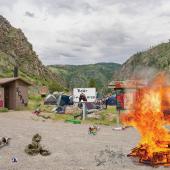Saving Water
We Montanans have a lot to be proud of when it comes to contributing to our nation’s conservation legacy: Montana is home to two of America’s most beloved national parks—Glacier and Yellowstone. Adjacent to these parks are two of our nation’s largest and most cherished wilderness areas: the Bob Marshall and Absaroka-Beartooth. Not coincidentally, we’re one of the few states in the lower 48 where all the large mammals that were present when Lewis and Clark passed through still roam free.
But as a lover of rivers, there’s one conservation legacy I’m especially proud of. For it was in Montana, deep in the Great Bear Wilderness, where the idea for the Wild and Scenic Rivers Act was born.
During the height of the modern dam-building era in the 1950s, the federal government’s two major dam-building agencies—the US Bureau of Reclamation and Army Corps of Engineers—were busy scouting every last free-flowing river in the west for potential dam sites. Among the prized rivers these agencies wanted to plug with concrete were the Colorado River in the Grand Canyon, the Green River in Dinosaur National Monument, and the Middle Fork of the Salmon River in central Idaho.
Closer to home, government engineers drew up plans for dams on the Yellowstone River south of Livingston, on the Gallatin River at the mouth of Spanish Creek, and on the lower Big Hole River by Glen. When the Corps of Engineers proposed damming the Middle Fork of the Flathead River at Spruce Park, famed wildlife biologist John Craighead led the fight against it. As a scientist, Craighead understood that acre for acre, lower elevation river corridors provided the most critical wildlife habitat in our ecosystem, and in order to protect grizzly bears and scores of other animals, we needed to protect our last best free-flowing rivers.
After a decade spent publishing scientific reports, delivering lectures, and lobbying Congress, the efforts of John Craighead and his twin brother, Frank, finally bore fruit when President Lyndon B. Johnson signed the Wild and Scenic Rivers Act into law in 1968. To this day, it remains the only law in the world that permanently protects rivers in their clean, free-flowing condition.
In 1976, eight years after the Act’s passage, Montana added its four rivers to the National Wild and Scenic Rivers System—a 150-mile reach of the upper Missouri and the North, Middle and South Forks of the Flathead River. Senator Max Baucus, then a freshman congressman, shepherded the legislation through the US House of Representatives.
Since then, no river in Montana has gained federal protection, despite the fact that our rivers face unprecedented threats driven by climate change and our society’s insatiable thirst for cheap energy. In just the past few years, a Bozeman-based company, Hydrodynamics, Inc., has proposed new hydropower projects on the upper Madison River below Quake Lake and on two spectacular streams that cascade off the Beartooth Plateau—East and West Rosebud creeks. I hate to say it, but these are the first of many such projects that loom on the horizon.
While Montana hasn’t seen a new Wild and Scenic River designated in almost four decades, our neighbors in Wyoming, Idaho, and Utah—not known for being the most environmentally progressive states in the country—got nearly 1,000 river miles designated as Wild and Scenic in 2009 alone. Why? Because they understand that in today’s economy, the communities that have the healthiest rivers and the largest protected areas nearby are seeing the most economic growth.
With climate change tightening its grip on the Rockies and the nation’s population center moving ever westward, the demand for new water development projects in Montana is certain to increase. Instead of rushing to sacrifice the last one-half of one percent of Montana’s stream miles that qualify for Wild and Scenic designation, let’s start with the low-hanging fruit and install turbines on existing dams and in irrigation canals where the environmental impacts would be minimal. Only three percent of the 3,500 inventoried dams in Montana currently produce any electricity at all.
In the meantime, let’s not wait until new dams, mines, and oil and gas drilling are proposed on our last free-flowing rivers. We’ve got a Montana-made conservation tool in our quiver which has already protected more than 200 rivers and 12,000 river miles across America. Let’s use it here, in southwest Montana, on the hundreds of miles of still-functioning rivers that have already been found eligible for Wild and Scenic designation.
For more information on our efforts to protect western Montana’s last best rivers through a combination of Wild and Scenic designations on public lands and incentive-based conservation measures on private lands, visit beta.healthyriversmt.org.
In addition to being an avid angler and river runner, Scott Bosse is the Northern Rockies Director for American Rivers in Bozeman.














